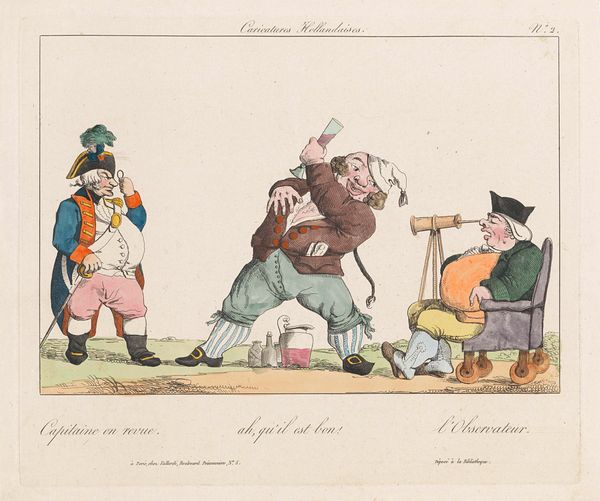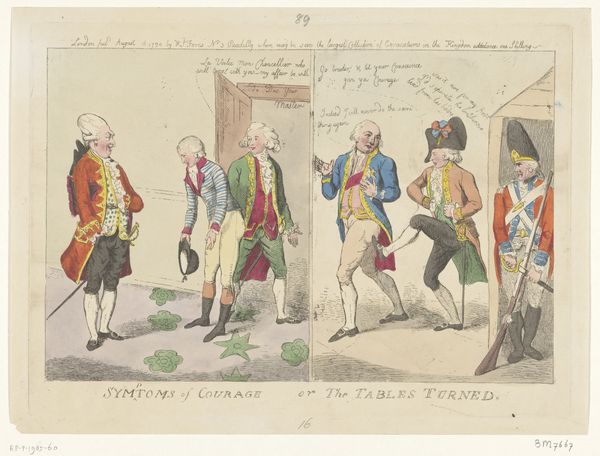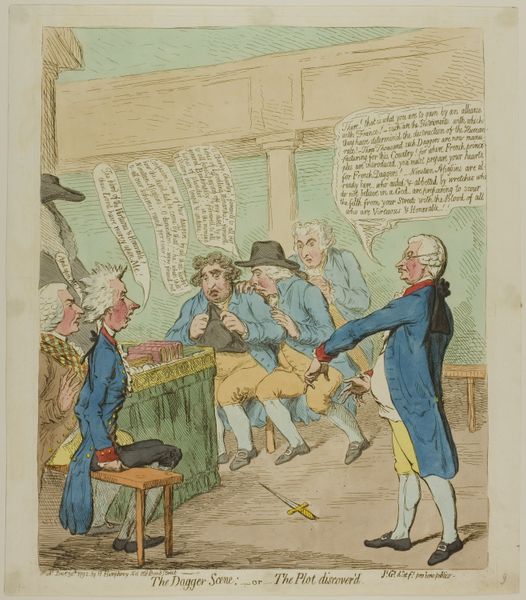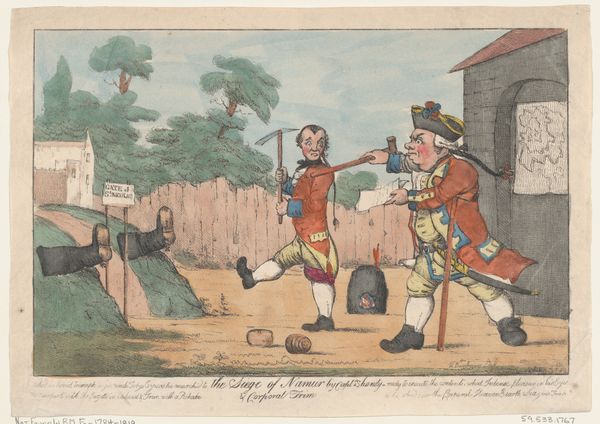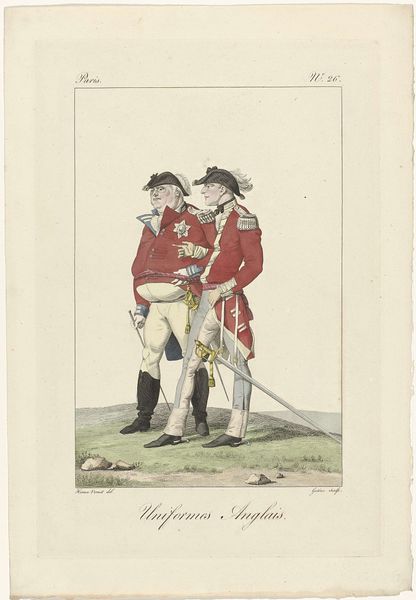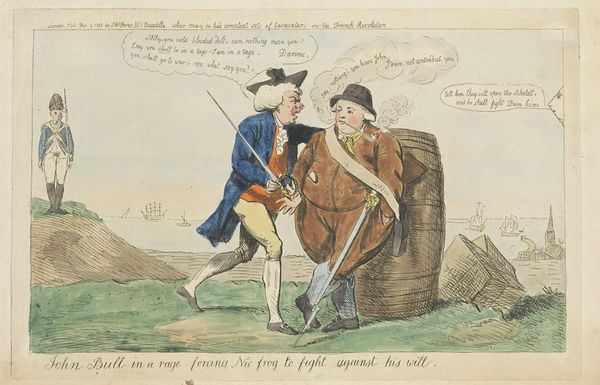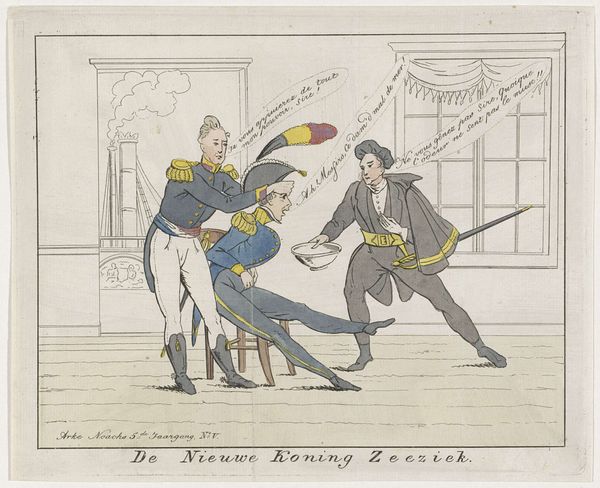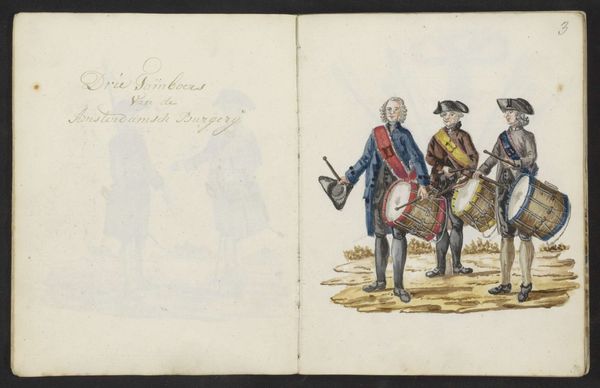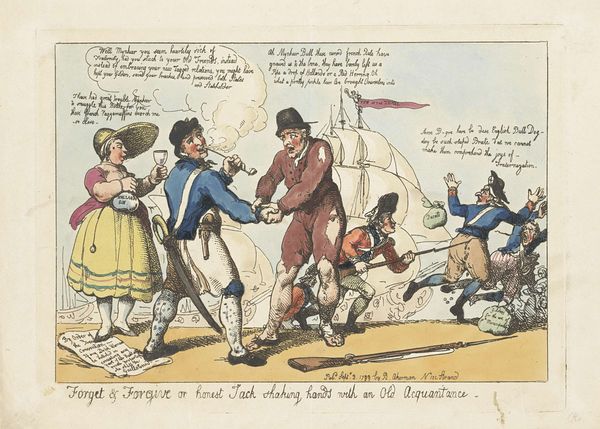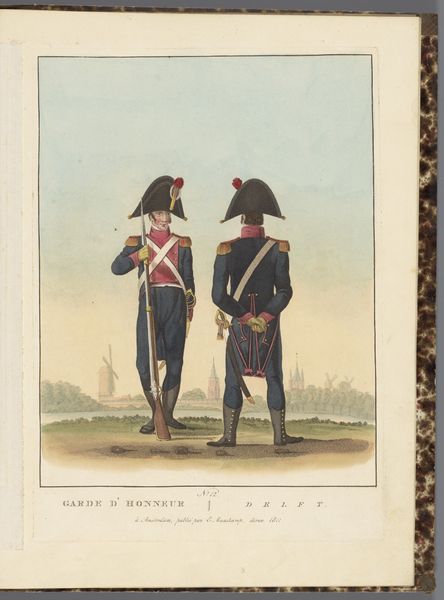
Imperial Jump-rope (Le Sauteur impérial, grand faiseur de tour) 1815
0:00
0:00
drawing, print, etching
#
drawing
# print
#
etching
#
caricature
#
historical fashion
#
traditional dress
#
romanticism
#
men
#
watercolour illustration
#
history-painting
Dimensions: sheet: 9 1/8 x 15 5/16 in. (23.2 x 38.9 cm)
Copyright: Public Domain
Curator: Look at the way the artist wields etching and watercolour to create a layered political commentary! What is your first impression? Editor: There's a real simplicity in its visual language—stark contrast between figures, minimal background—and an emphasis on line work and the materials speak volumes, a very economical work when you look at the conditions surrounding its production. Curator: Exactly, this is "Imperial Jump-rope (Le Sauteur impérial, grand faiseur de tour)" dating back to 1815 by Friedrich August Mottu currently held at the Metropolitan Museum of Art in New York. This artwork is saturated with Romantic irony about Napoleon's failed ambitions. The caricatured Napoleon, ridiculously small, becomes the object of international powers. It really undermines the heroic narrative he was crafting. Editor: Yes, but think about the paper itself, the etching technique, watercolour tinting -- all quite common and readily accessible materials at that moment. And the production, relatively quick and easily reproduced to feed into the political discourse against Napoleon? The artist really weaponized affordable material. It served a direct function. Curator: Precisely, but also there’s that cruel humour meant to demean. Napoleon becomes this spectacle, subjected to the whims of the victors, jumping as high as he can to, in his view, reclaim some power and dignity, the implication being that all he accomplishes is ridiculous entertainment for them. It's a visual power play rooted in humiliating defeat. Editor: Considering its use of such everyday, common material and simple reproducible techniques, that commentary must have spread far beyond gallery walls and reached wide segments of the population! It's interesting how the context of accessibility shapes the work's socio-political impact. Curator: This reminds us how art participates in shaping historical memory, reinforcing narratives about power and downfall. By visually diminishing Napoleon, the artwork becomes part of a larger historical judgement. Editor: And a sharp reminder to scrutinize both material means and social conditions of art making! A seemingly simple caricature illuminates a far broader history of materials and labor intertwined with political intentions and class divisions. Curator: Well, exploring the intersecting narratives of identity, political propaganda, and gendered portrayal here adds considerable depth. Thanks for emphasizing the materiality and labour enabling this critique. Editor: My pleasure. Bringing these layers together really shows the significance of accessible materials in circulating a message.
Comments
No comments
Be the first to comment and join the conversation on the ultimate creative platform.

